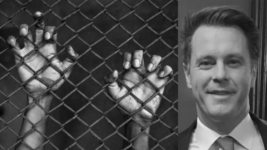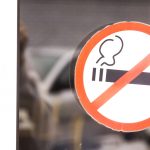NSW Government’s Tough-on-Youth-Crime Package: An Exercise in Passing Regressive Laws for Optics

On Tuesday, the NSW Labor government made it known that it’s concerned about not appearing tough enough on kids who fall foul of the law. And as of Tuesday this week, the state has been altered to a youth crime wave said to be ravaging regional areas.
The Queensland government, the NT administration, the Cook government in WA and the only Liberal government in Tasmania, have all been condemned over recent years for either passing draconian laws to deal with youth crime, or operating child prison’s rife with abuse.
Indeed, on announcing the $26.2 million youth justice “early intervention and prevention program” reforms on 12 March, NSW premier Chris Minns added that his government has determined not to raise the age of criminal responsibility from 10 to 14 years, as it’s not on NSW Labor’s agenda.
So, as the premier considers raising the age of criminal responsibility a nonissue, this infers, when considering the law of averages and past statistics, that our state’s leader thinks locking up kids aged from 10 through to 13, the majority of whom are First Nations children, is preferable to not.
“We know there is no easy solution,” said Minns, in an accompanying statement. And he added that the reforms will “give young people a chance at life”.
Yet, delivering a suite of tough-on-crime laws, when it’s well-known that less punitive measures produce better results, and that the youngest detainees these laws will impinge upon don’t have the cognitive ability to grasp criminality yet, tends to simply signal the regressive outlook of NSW Labor.
Same old, same old
The Bail and Crimes Amendment Bill 2024 was introduced on 12 March. And for all the hype about “early intervention and prevention”, on opening the explanatory memorandum, it explains the bill will simply toughen youth bail and create a new offence.
“Ensuring community safety is a key priority for the Minns Labor government,” said NSW attorney general Micheal Daley, during his second reading speech on the bill.
“Reports from communities in regional NSW, and statistics from… BOCSAR, indicate that our regions have been experiencing higher rates of crime than metropolitan areas,” the chief lawmaker added. “We have heard the people of our regional communities when they say this is not good enough.”
The BOCSAR (NSW Bureau of Crime Statistics and Research) figures were released on Thursday morning, and they confirm that crime in regional NSW, as elsewhere across the state, has been trending downwards over the last two decades.
But the report adds that property crime is higher in regional NSW than in Sydney and motor theft has risen in the regions by 20 percent over the last 5 years.
According to Daley, rising crime rates in regional areas are being driven by youths, with repeat offending on bail a trend. And the AG explains that most of this rising crime consists of motor vehicle theft and serious break and enter, which are referred to as the relevant offences in the legislation.
Daley further outlines that the government is aware of concerns about increasing numbers of young people, especially Aboriginal youths, in the system, and as part of the overall package there will be higher investment in “therapeutic and community-based solutions”.
The guts of the bill
The first reform would see section 22C inserted into the Bail Act 2013 (NSW), which contains a temporary law, involving youths 14 to 17, who commit motor theft or serious break and enter whilst on bail, then having it revoked if they’re on conditional release due to a relevant offence.
The law requires that in considering bail, the bail authority must perform the “unacceptable risk test” under division 2 of the Bail Act, which means an assessment of whether the offender will show up in court, will likely reoffend, may try to harm victims or interfere with witnesses.
Specifically for motor offences, the new law triggers the crimes of taking a conveyance without consent, contrary to section 15A of the Crimes Act 1900 (NSW), as well as section 15B’s taking motor vehicle with assault and stealing motor vehicle or vessel, under section 15F.
As for serious break and enter crimes, the offences involved in the new regime are those that appear under part 4 division 4 of the Crimes Act, which carry a maximum penalty of 14 years inside.
The second amendment sees new section 154K inserted into the Crimes Act. This holds the new offence of performance crime, which involves the commission of a relevant offence, as well as then posting images, footage or sound of it on social media or online bragging about the crime.
The Minns government advises that “posting and boasting” crimes are on the rise amongst youth offenders. And the penalty that applies for this offence becomes the maximum involved in the relevant offence being advertised via an online post, plus 2 more years added to that.
“To avoid doubt, if an offender is convicted of a performance crime offence, the offender cannot also be convicted of a motor theft offence or breaking and entering offence in relation to the act or omission constituting the performance crime offence,” the legislation adds.
The bail law sunsets 12 months after enactment and it will then be reviewed, whilst the posting and boasting law will be reviewed after 2 years in operation.
Noncustodial trimmings
The government has also budgeted $13.4 million to invest in addressing youth crime in the NSW town of Moree. This will include new “bail accommodation”, which translates as a new youth lockup, and also on the agenda are more afterhours activities for youths, and a surge in policing resources.
And there is also $12.9 million to be invested into expanding Youth Action Meetings to nine more police districts, and a broadening of the Safe Aboriginal Youth Patrol Program, which is a mobile drop-in centre, as well as another $7.5 million for further investment in justice reinvestment.
Shocked and dismayed
“No one enters public life in the hope that you’ll introduce legislation like this and that includes myself, but we can’t face a situation where we have a cycle of repeat offences,” Minns told reporters, as he announced the crackdown on youth offenders on 12 March.
But whilst this sentiment sounds real, it doesn’t ring quite true, as looking back over the last decade of Coalition rule, it appeared a variety of ministers had entered parliament to get tough on crime, and Minns, with his new bail law and having hate speech last year, seems no different.
In a statement online after she’d attended a press conference on Minn’s youth crime package, alongside lawyers from the Aboriginal Legal Service NSW/ACT, NSW Greens MLC Sue Higginson said that those gathered before reporters were shocked and dismayed by the crackdown.
“NSW Labor under Minns is engaging in reckless, tough-on-crime posturing,” said the Greens justice spokesperson. “They’re turning their back on evidence-based measures to keep our communities and our children safe – all to appeal to a constituency of shockjocks and columnists.”
“It goes against the safety of the community, against the advice of the experts, and against the beliefs in his own cabinet,” Higginson underscored. “It is the move of a cynic and a coward.”







